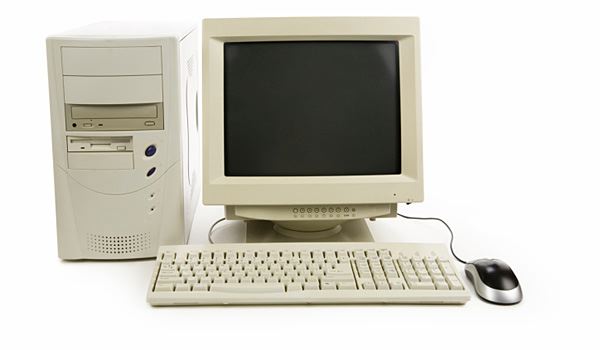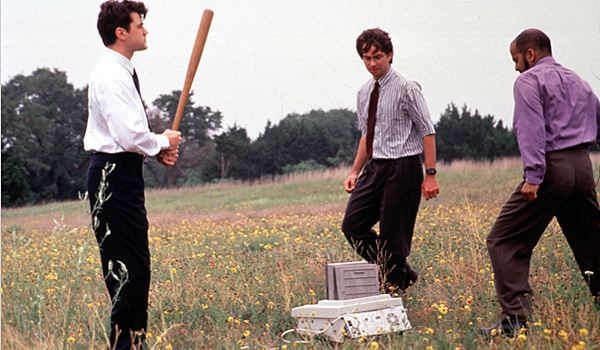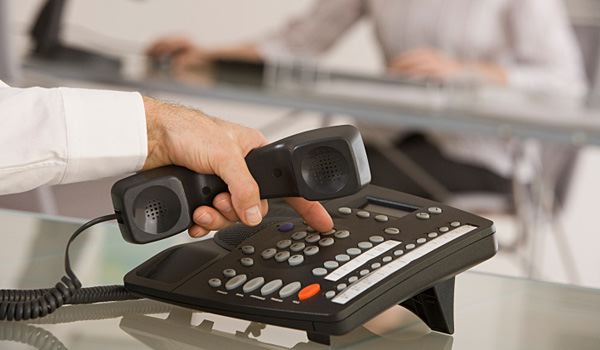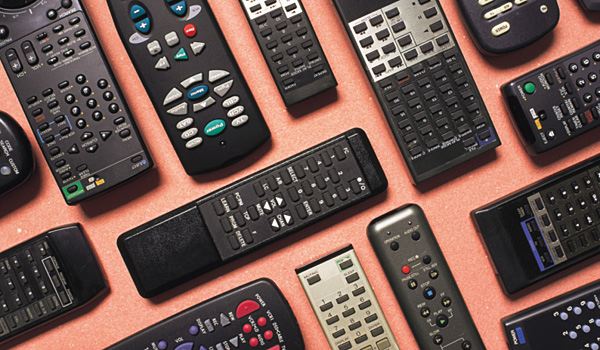1. Combustion Engines
Given the geopolitical, environmental, and economic problems associated with oil, the drumbeat to replace combustion engines becomes louder every year. It’s just a question of coming up with an affordable replacement that will satisfy the needs of the driving public. Easier said than done, of course, but auto companies around the globe are pouring millions into finding a solution. “We have to get it to the point where [battery technology] can provide a pure battery electric range of about 300 miles in an efficient package,” says Rob Peterson, a spokesman for Chevrolet’s plug-in hybrid-electric Volt. He says the combustion engine isn’t going to be obsolete until that happens and a nationwide infrastructure is in place to let drivers recharge their cars. “That is the tipping point.”
The hottest devices and coolest gadgets of the moment are dusty in the marketplace before the ink is dry on the receipt. And the pace of replacement is getting faster every year. Indeed, there are so many game-changers in the world of technology that the death knell is sounding on many a device that we use every day.
2. Consumer Video Cameras—MiniDV, Flip Cameras, Camcorders
Smartphones are rapidly eating into the consumer video camera market on one side, while SLR cameras with HD capability are slicing off the other side. The main mechanical question that remains is optics. Phones are still stuck on digital zooms and tiny lenses. Battery power is also a problem. As Gartner mobile phone analyst Ken Dulaney puts it: “You can almost see people buying these devices for no other reason than carrying a spare battery. Just wrap them in spare electronics and call it whatever you want.” But as battery power and storage capabilities get better for phones, owning a smartphone with HD video and, say, a Flip camera, will be redundant. We may already be there.
3. Credit Cards
One billion credit cards in American wallets are landfill-bound. “We have reviewed more than 100 companies that are developing payment schemes that would eliminate cards altogether,” says phone and card industry consultant Richard Crone, of Crone Consulting in San Carlos, Calif. Indeed, credit-card companies such as Visa and Mastercard might lose out on swipe fees if merchants are able to capitalize on direct payments from bank accounts, referred to as “decoupled debit.” Cards and phone companies want so-called near field communication, a chip integrated into cards and phones that provides for contactless swipes. Paired with biometrics, such as fingerprint identification, other bygones could include a PIN number and your John Hancock.

4. Desktop (tower) PCs
The Pew Research Center reports that the number of Americans with a laptop has grown from 30 percent to 52 percent since 2006, while the number of desktop owners has declined. As cloud computing expands, more people are depending on phones, tablets, and laptops for storage. It doesn’t mean the idea of the desktop is going to disappear altogether, especially considering business and privacy concerns. “There are a lot of times when you’re sitting still and concentrating on working—whether that will be a media tablet or a smartphone device that you dock to something or whether those deskbound devices evolve in a way that has some advantage for when you are sitting there—I wouldn’t write off a static form factor,” says Jackie Fenn, an emerging technologies analyst at Gartner.
5. DVDs and Blu-Ray
CDs may as well be 8-tracks at this point. Of course, DVDs will soon be little more than brightly colored plastic, too. “We have known from the beginnings of Netflix more than a decade ago that DVDs would eventually become obsolete and content would be delivered to our members over the Internet,” says Ken Ross, spokesman for Netflix. “The question for us has been how much to invest in streaming technology and content—and how quickly.”
6. Digital Music Players
They’re popular. The number of Americans who own one increased from 11 percent to 47 percent of the population in five years, according to the Pew Research Center. But the future has looked bleak for the little devices since the launch of the first smartphone. As Jordan Selburn, an analyst at iSuppli, puts it: “I’ve got an iPhone, so there isn’t any need for me to buy an iPod.” Recently released sales figures from Apple show that iPods—which account for more than 70 percent of the U.S. MP3 player market—have done poorly this year; the latest quarter showed an 11 percent decline on sales. That compares with a 93 percent increase in sales of iPhones for the 2010 fiscal year.
7. E-Readers
Ownership of e-readers and tablets are neck-and-neck today, at just about 5 percent of the population each, according to the Pew Research Center. But sales estimates from this year show that tablets are likely to take over the market. An estimate by iSuppli puts sales at 12.9 million tablets this year, while Gartner recently projected 19.5 million. That compares with a Yankee Group estimate of just 6 million e-reader sales this year. “An e-book reader is better for reading books than an iPad today,” says iSuppli’s Selburn. “At some point, that will cease to be the case.”
8. Fax Machines
Somehow, someway, fax machines are still being used. In the outdated legal world, fax machines are still sometimes assumed to be more legitimate than an electronic signature. The crazy part is that a fax machine takes a document, converts it to digital, and then sends it over phone lines using analog sound. On the other end, it is converted back to digital and then to paper again. Electronic signatures have, at many businesses, become more legitimate. Scanning a document, e-mailing it, and then printing it out just cuts the analog out of the technology loop.
9. Game Consoles
The gaming world is moving toward multiplayer games over the Internet and massively multiplayer online role-playing games, such as World of Warcraft, which hit 12 million users this month, according to a release by parent company Blizzard Entertainment in Irvine, Calif. Users of the current generation of Sony Play Station 3, Xbox 360, and Nintendo Wii, says Wedbush Securities analyst Michael Pachter, include an estimated 140 million game console owners. But the idea of a console, Pachter says, is likely to be obsolete within a decade: “It will take the better part of 10 years to have broadband in everyone’s living room and a device [to let us] access the Internet over the television.” When that happens, gamers will be able to do everything a console does, without a console.
10. Pagers
The bottom line is that pagers are still far superior to cell phones when it comes to reliability. They radiate more power than cell phones and hence have far wider coverage area. Until cell phones are reliable in large hospital complexes and on deserted highways, pagers will be used by doctors, EMTs, and firefighters who must respond quickly to emergencies. When first responders find cell phones more reliable than pagers, we’ll finally bury the last pager.
11. Dash-Mounted GPS Systems
There was a day when the GPS map reader was like having a friend in the passenger seat with a map, giving directions. Amazing—except that your passenger can’t tell you about the multicar pileup in two miles or the road closure on your usual route. Hence makers of personal navigation devices for car companies are sweating because smartphone apps are so much, well, smarter than a standard GPS. Car companies are getting onboard. For example, GM’s OnStar is coming out with apps that will integrate smartphones into on-dash computers. “When you get in your vehicle and you start your vehicle, you already have routing instructions,” says Steve Schwinke, director of advanced system design for OnStar. “That’ll be out next year.” Drivers are happy they don’t have to leave their directions behind. “People will carry their smartphone anywhere they go,” says Ramon Llamas, an analyst at IDC. “You can’t really say the same for a GPS.”
12. Keys
Businesses are leading the way on this one. You used to get the key to the building. Now fingerprint access to your floor or computer terminal is not unusual. Why carry a ring of keys when secure access to your home, car, or office can be more exact? Avi Silberschatz, a computer science professor at Yale University, sees a broader role for biometrics as a way to revolutionize other objects we carry every day, such as identification cards. “The major use of biometrics from my point of view is for authentication,” Silberschatz says. “I am who I am.” Indeed, the use of biometrics is being explored in wider demographics, from keeping track of kids on a school bus in California to passports linked to biometrics in Canada.
13. Landline Telephones
Except for businesses and octogenarians, landlines are essentially out. Eighty-five percent of Americans now own a cell phone, according to a recent Pew report. And it’s as easy to video chat with someone in Kansas as it is to chat with someone in Ethiopia over Skype—for free. Still, cell coverage and good Internet access aren’t universally available, and some holdouts want a home phone. Gartner mobile-phone analyst Ken Dulaney says the near-future holds more integration between the cordless phone world and mobile-phone world, because consumers want private numbers for various members of the family and a house number you can give to the plumber. “Those are still separate,” he says, “but those worlds will converge, and the cell phone will dominate.”
14. 3D Television with Glasses
Perhaps we’re a bit ahead of ourselves here, but since a whole country is engaged in wishful thinking, for the moment we’ll go along. In May, Japan announced that as part of a bid for the FIFA World Cup in 2022, the country would have the ability to project holographic reproductions of live games by 2016. That would mean we could ditch the 3D glasses, go to a stadium, and watch the game played out by digital avatars. Michael Inouye, an analyst with New York’s ABI Research, says he doubts the claim of workable holographs by 2016 but says 3D television with glasses will be obsolete on the retail side within three to five years.
15. Metronomes and Tuners
Such apps as GuitarToolkit by Agile Partners have revolutionized music for amateur and pro strummers with a highly accurate chromatic tuner, chord chart, metronome, and scales packed onto an iPhone. Oh yeah, and you can switch over to a bass, banjo, or half a dozen other instruments as well. “I was in a rehearsal and the conductor said, ‘does anyone have a metronome?’ In 30 seconds I had an app that was better than any metronome I had ever used. It was amazing. That’s why I wouldn’t want to be a metronome manufacturer today,” says Jordan Selburn, an analyst at iSuppli. “The question then becomes, do you want to be a fill-in-the-blank manufacturer today.”
16. PDAs
We’re not posting this so techies will jump all over us and claim personal digital assistants (PDAs) are already dead. HP still manufactures them, although Ramon Llamas, an analyst at IDC, says the company ships barely 100,000 units worldwide each year. Palm dropped out of the market in 2009, and Dell stopped manufacturing PDAs in 2007. “Everyone was so excited that, hey, in your pocket you can carry your calendar and all sorts of stuff,” says Llamas. “The value proposition was limited to that. Even if you had it, you still needed a computer to send an e-mail and a phone to make a phone call. Don’t even try using the Internet on a PDA; it’s a terrible experience.”
17. Point-and-shoot Digital Cameras
Smartphones are having an effect on the point-and-shoot market as greater numbers of people leave the camera at home in favor of posting quickly to the Internet or e-mailing a photo to friends. Jordan Selburn, an iSuppli analyst, says the low-end camera market is already getting squeezed. Some claim that point-and-shoot cameras are already obsolete, but the optics on smartphones just aren’t there yet. Megapixels be damned, we’re talking about glass. “There’s no question that a lot of people are just happier using their phone,” says Gartner mobile-phone analyst Ken Dulaney, “but I’d be a little afraid of saying point-and shoot-cameras will be gone in five years.” Twenty years out is a different story altogether.
18. Remote Controls
Even beyond apps for smartphones or tablets that act as a universal remote, televisions will soon be as responsive as a well-trained sheepdog (we’re talking hand signals here), though the first couple of iterations may take some additional training. The first motion-sensing TVs that come without a remote are expected out by the end of this year. In the gaming world, Microsoft is working on Kinect for Xbox 360, a gaming component that responds to motion. Voice recognition is also in the works. “From a personal perspective, part of me wonders why [remotes] aren’t obsolete already,” says iSuppli analyst Jordan Selburn. “Everybody agrees that remote controls will not exist. Why do we have to have this thing in our hands and push buttons when we should be able to just ask for it?”
19. USB Memory Sticks
These little gems are still the delight of tech conferences, but they are the 3.5-inch floppy disks of today. To start, there is less need to transport data in any kind of physical format, considering the fact that you can just e-mail things to yourself or store it on a protected network. This is really about cloud computing, a technology that emerging technologies analyst Jackie Fenn says will be transformative. That doesn’t mean cloud computing will kill hard-drive technology or take away local storage entirely. As she puts it: “For the foreseeable future, synchronization with cloud and local storage is the most likely scenario.”
20. Power Cords
We’re not talking about heavy metal. Those power chords will never die; you just won’t need to plug that Marshall double stack amp into the wall. “We say anything with a cord or a battery is a candidate for being replaced,” says Eric Giler, chief executive of WiTricity, a 2007 MIT spinoff on the cutting edge of wireless charging. “Power is the last thing to go wireless.” Wireless chargers are already on the market, and the possibility of charging devices in the same way wireless Internet works in a home is not far off. WiTricity recently announced a partnership with an auto-parts maker to produce a cordless charging mat for electric cars. “It’s possible that as electric vehicles come into the mainstream, almost immediately, you won’t have to plug them in,” Giler says. He reckons that’s only “a year to three years” off.

0 comments:
Post a Comment